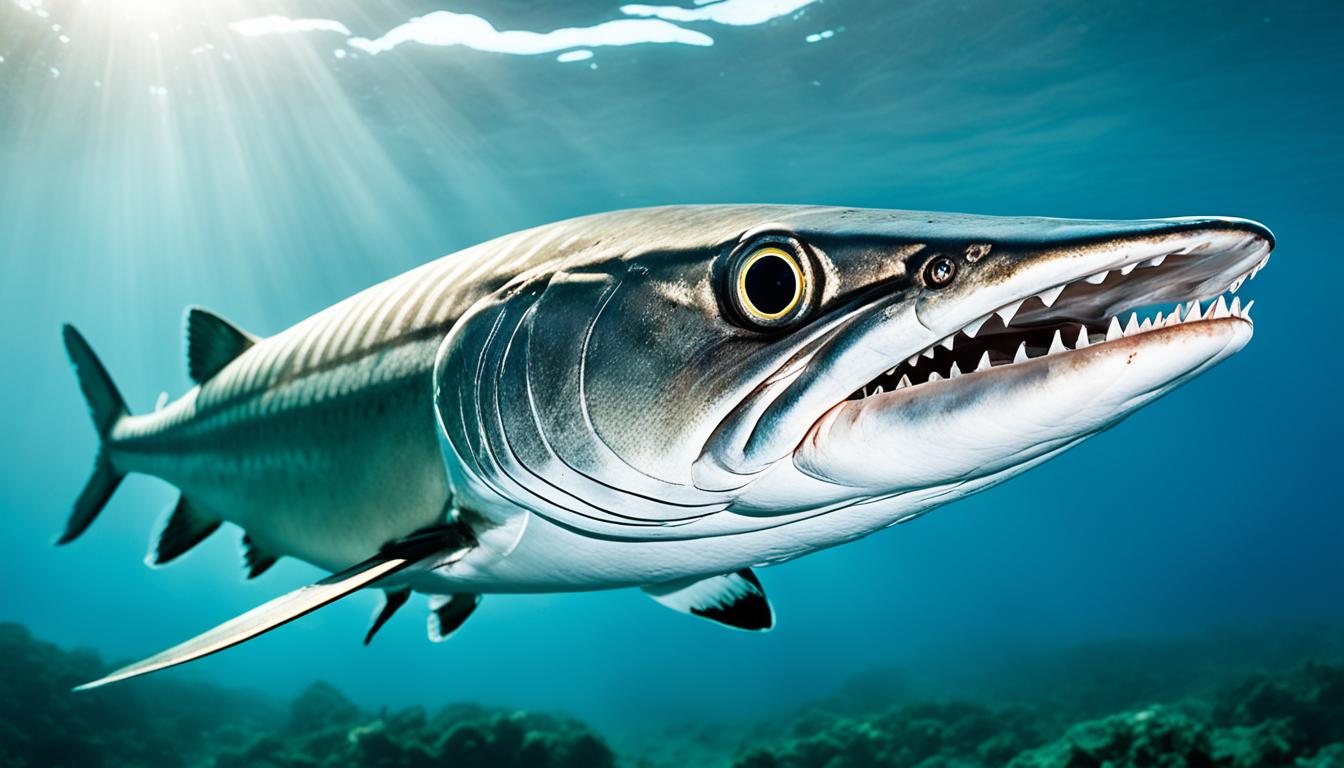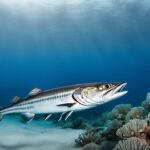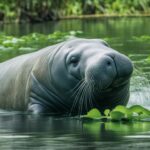Barracudas are known for their unique look and hunting skills. To understand how they adapt, we need to look at their physical and behavioral traits. These traits help them thrive in different ocean environments, making them top predators.
Let’s dive into how they adapt, including their hunting and social behaviors. These strategies are key to their survival and keeping the ocean’s balance.
Barracudas Habitat and Geographic Range
Barracudas are key players in marine ecosystems. Their habitat and range tell us a lot about how they live and survive. They love warm waters, especially in tropical areas.
Geographic Distribution
Barracudas live in many warm seas around the world. You can spot them from Massachusetts to the Bermuda Islands. But, they’re not found in the Eastern Pacific. This shows they have a special spot in the ocean.
They can live in different waters, but they’re most common in warm ones. This tells us where you’re most likely to see them.
Preferred Habitats
Barracudas like living in coral reefs, coastal lagoons, and mangroves. These places have lots of food and places to hide. They need water that’s between 74°F and 82°F to be happy.
Even though they usually stay in saltwater, they go into brackish water to spawn. This shows they can change to fit their surroundings.
Physical Characteristics of Barracudas
Barracudas are amazing creatures with unique traits that make them top predators. Their sleek body is built for speed and agility in the water. Their body structure shows how they’ve adapted to hunt and survive in different water environments.
Body Structure and Adaptations
Their anatomy features a long, thin, and tube-like body. This shape helps them move fast and catch prey easily. The key parts of their body include:
- Large scales that protect them and reduce water resistance.
- Two dorsal fins far apart, which help with balance and quick turns.
- A sharp head that improves their swimming efficiency.
- A strong tail fin important for speeding up during hunts.
Unique Dental Features
Their teeth are another standout feature, crucial for their eating habits. Barracudas have sharp, cone-shaped teeth in two rows. These teeth help them:
- Catch and hold onto fish easily.
- Eat a wide variety of food, making them versatile hunters.
Learning about the barracudas’ physical traits, like their body and teeth, shows how they’ve evolved to be top predators. These features boost their hunting skills and show their key role in marine life.
Barracudas Behavioral Adaptations
Barracudas have amazing behaviors that help them survive in the sea. These behaviors show how good they are at hunting and how they interact with others at different stages of their lives.
Hunting Strategies
Barracudas are known for their aggressive and successful hunting ways. They hide in seagrass or coral before quickly attacking their prey. Their fast speed lets them catch their food with ease. Their hunting strategies include:
- Speed: Barracudas can swim very fast, helping them chase down prey quickly.
- Camouflage: Their colors help them blend in, making it hard for prey to see them.
- Group Attacks: Young ones sometimes hunt together to catch bigger fish.
Social Behavior and Maturity
As barracudas grow, their social behavior changes a lot. Young ones stick together for safety against big predators. But as they get older, they like to be alone and protect their hunting spots. Adult barracudas can be very protective of their areas. Key social behaviors are:
- Schooling in young ones for safety from big predators.
- Territorial behavior in adults, defending their hunting spots.
- Working with other species for hunting together.
How do barracudas adapt to their environment?
Barracudas have many adaptations that help them survive in different marine ecosystems. They can live in various conditions, showing how resilient and smart they are. They have special ways of hunting and reproducing.
Survival Strategies
Barracudas use an ambush style to hunt. They are fast and sneaky, hiding in places like coral or seagrass before striking. This way, they save energy and catch smaller fish easily. They also change how they hunt based on the type of prey they find.
Spawning and Reproductive Behavior
Barracudas have special ways of reproducing in shallow waters. They spawn many times a year to increase their chances of success. The young fish know to find safe, shallow places right after they hatch. This helps them survive and grow, ensuring their species continues.
Ecological Role of Barracudas
Barracudas are key players in their ecosystems as top predators. They control the numbers of smaller fish, keeping the environment healthy. This section looks at their role in the food chain and how the environment affects their behavior and where they live.
Predator in the Food Chain
Barracudas are cold-blooded ocean invaders that shape the marine food chain. They mainly eat smaller fish like sardines and mackerel. This helps keep these fish populations in check, preventing any one species from taking over.
Impact of Environmental Conditions
Barracudas react to changes in their environment, like water quality, temperature, and salinity. These changes can change how they hunt and reproduce. Their ability to adapt shows they are crucial for the health of marine ecosystems.
| Environmental Factors | Impact on Barracudas | Implications for Ecosystem |
|---|---|---|
| Water Temperature | Affects metabolism and hunting efficiency | Influences fish population dynamics |
| Water Quality | Impacts reproductive success | Can lead to changes in species composition |
| Salinity Levels | Alters habitat preferences | May cause barracuda migration |
Evolving Over Time: Barracudas and Natural Selection
The story of barracudas and their evolution is fascinating. It shows how they’ve changed over time due to their environment. These fish have developed traits that help them survive in the ocean.
Barracudas are known for their speed and agility. These traits help them catch prey quickly. Their bodies are built to move fast through the water, making them swift hunters.
They also have special colors that help them blend in with their surroundings. This makes it easier for them to sneak up on their prey. These changes in color are a key part of their survival strategy.
Barracudas have also learned to work together to hunt. They form groups that can catch more fish than they could alone. This teamwork is another way they’ve adapted to their environment.

Conclusion
To truly understand barracudas, look at their unique body and behavior. Their sleek bodies make them fast and agile in the water. This helps them chase down prey with ease. Their sharp, long teeth also make them skilled hunters, playing a big part in their survival.
Barracudas have interesting ways of hunting and living together. These behaviors help them reproduce and keep their species going. By studying their social and hunting habits, we learn more about their complex lives.
In short, barracudas adapt in many ways to live well in their world. Their physical and behavioral traits are key to their success. Learning about their adaptations shows how important they are to the ocean’s balance. This knowledge helps us see the deep connections in marine life.










